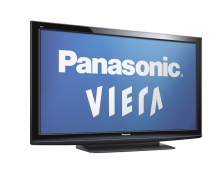
Falling LCD Panel Prices Impact Retail Pricing During Holiday Season
As Black Friday shoppers gear up to find the best bargains, LCD
TVs will likely top their holiday wish lists.
According to market research company The NPD Group, LED-backlit
LCD TV prices have fallen 44% from October 2009 to October 2010
to $1,106. Traditional (CCFL) LCD TVs have also seen significant
price drops, declining 24% to $435.
"Holiday circulars consistently feature flat-panel TVs as the marquee door buster electronics category on Black Friday. This year, retailers will seek to offset several months of year-over-year flat-panel revenue drops driven by slowing price declines and rising household penetration," said Ross Rubin, executive director of industry analysis at NPD. "While LED TV pricing is dropping more quickly than that of traditional LCD sets, LED-backlit models still command a significant price premium."
While prices for LED chips are falling steadily, the pricing dynamic for the LCD panels themselves is somewhat more complex. After the economic downturn, demand returned quicker than expected in 2009, and the supply chain was faced with product shortages during the second half of the year that fed rising prices for LCD TV panels into the first half of 2010. Since it takes about three months to move through the LCD TV supply chain, the rising panel prices led to slower average selling price declines at retail during the first half of 2010.
"Because profit margins have thinned in the LCD TV category, brands and retailers are somewhat at the mercy of the supply chain when trying to push retail prices lower," noted Paul Gagnon, Director of North America TV Market Research at DisplaySearch. "The result has been a cooling of growth in some markets, such as the US. As often happens in such cycles, the resulting slowdown in demand for key components including LCD TV panels has once again shifted the supply chain back towards oversupply."
LCD TV panel prices began falling once again in Q2' 10 particularly for the two most popular size categories, 32" and 40/42", which were 10% and 5% lower in Q3' 10 than they were in Q3' 09. "The falling panel prices in Q2' 10 and Q3' 10 will have a direct effect on retail pricing during the Q4' 10 holiday. If consumers remain sensitive to falling prices, it could help jump start demand in the US," Gagnon concluded.
"Holiday circulars consistently feature flat-panel TVs as the marquee door buster electronics category on Black Friday. This year, retailers will seek to offset several months of year-over-year flat-panel revenue drops driven by slowing price declines and rising household penetration," said Ross Rubin, executive director of industry analysis at NPD. "While LED TV pricing is dropping more quickly than that of traditional LCD sets, LED-backlit models still command a significant price premium."
While prices for LED chips are falling steadily, the pricing dynamic for the LCD panels themselves is somewhat more complex. After the economic downturn, demand returned quicker than expected in 2009, and the supply chain was faced with product shortages during the second half of the year that fed rising prices for LCD TV panels into the first half of 2010. Since it takes about three months to move through the LCD TV supply chain, the rising panel prices led to slower average selling price declines at retail during the first half of 2010.
"Because profit margins have thinned in the LCD TV category, brands and retailers are somewhat at the mercy of the supply chain when trying to push retail prices lower," noted Paul Gagnon, Director of North America TV Market Research at DisplaySearch. "The result has been a cooling of growth in some markets, such as the US. As often happens in such cycles, the resulting slowdown in demand for key components including LCD TV panels has once again shifted the supply chain back towards oversupply."
LCD TV panel prices began falling once again in Q2' 10 particularly for the two most popular size categories, 32" and 40/42", which were 10% and 5% lower in Q3' 10 than they were in Q3' 09. "The falling panel prices in Q2' 10 and Q3' 10 will have a direct effect on retail pricing during the Q4' 10 holiday. If consumers remain sensitive to falling prices, it could help jump start demand in the US," Gagnon concluded.





















